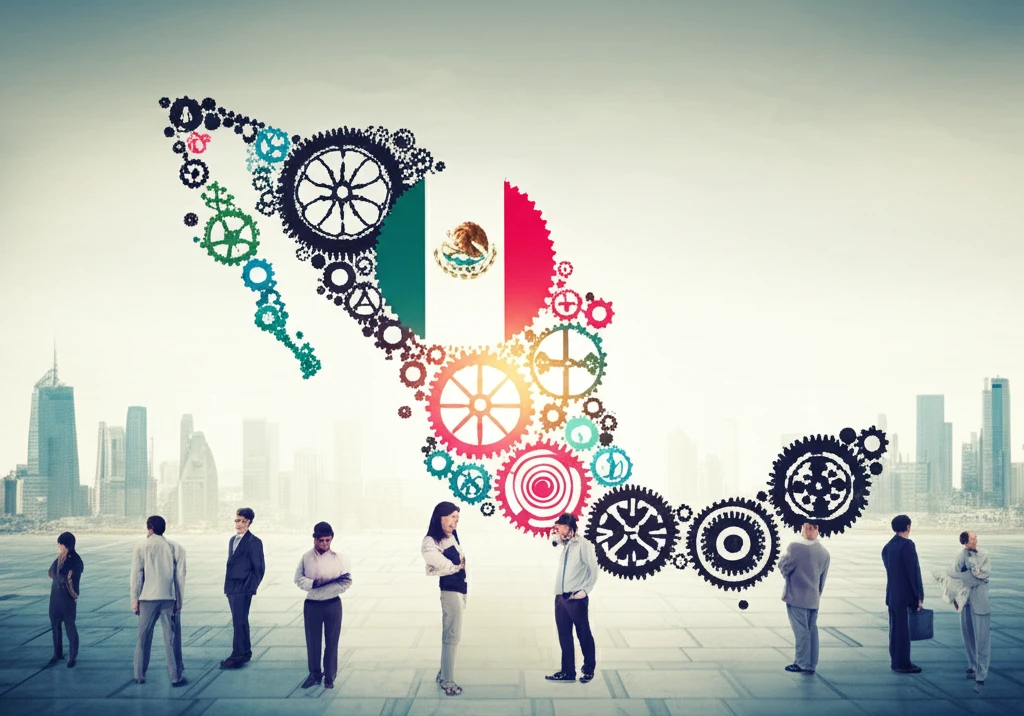
Unlocking Innovation: How Mexico is Rewriting the Rules for Business Success
"Discover how strategic policies and collaborative networks are empowering Mexican SMEs to compete on a global scale."
In an era where globalization and technological advancements redefine the landscape of business, nations worldwide are seeking innovative pathways to bolster their economies and enhance their competitive edge. Mexico, with its strategic location and dynamic workforce, has emerged as a key player in this global arena. Recognizing the pivotal role of innovation, the country has embarked on a transformative journey to cultivate a thriving ecosystem where businesses, particularly small and medium-sized enterprises (SMEs), can flourish.
At the heart of Mexico's strategy lies a series of carefully crafted policies and initiatives aimed at fostering collaboration, driving investment, and nurturing the innovative spirit of its entrepreneurs. These efforts recognize that innovation is not merely about technological breakthroughs; it encompasses new business models, improved processes, and enhanced capabilities that enable companies to thrive in an increasingly competitive market. By focusing on SMEs, which constitute a significant portion of its economy, Mexico is laying the foundation for sustainable growth and inclusive prosperity.
This article delves into the intricacies of Mexico's innovation system, exploring the key policies, actors, and strategies that are reshaping the nation's business landscape. From collaborative networks to targeted investments, we uncover the mechanisms through which Mexico is empowering its SMEs, unlocking their potential, and rewriting the rules for business success in the 21st century. Join us as we journey through the evolving landscape of Mexican innovation and discover the lessons that can be applied on a global scale.
Why Innovation Systems Matter: Catalyzing Growth in Mexico

Innovation systems are the backbone of economic advancement in today's interconnected world. They're not just about inventing new gadgets; they're about creating an environment where knowledge, learning, and ingenuity drive competitiveness. For Mexico, boosting its innovation capacity is crucial for staying ahead in the global market. The country has been strategically focusing on improving cooperation between businesses, research institutions, universities, and government entities to achieve this.
- Incentives and Technical Support: Providing SMEs with incentives and technical assistance to encourage innovation.
- Business Networks: Encouraging the development of business networks to facilitate innovation.
- University-Private Sector Collaboration: Strengthening ties between universities and the private sector.
The Road Ahead: Lessons Learned and Future Directions
Mexico's journey to foster innovation through strategic policies and collaborative networks offers valuable insights for other nations striving to enhance their competitiveness. By prioritizing SMEs, promoting collaboration, and investing in capacity building, Mexico is laying the groundwork for sustainable economic growth and inclusive prosperity. As the country continues to refine its approach and address the challenges that remain, it is poised to unlock the full potential of its businesses and secure its place as a leader in the global innovation landscape. The key will be sustaining these efforts, fostering a culture of innovation, and ensuring that all stakeholders are aligned and engaged in the pursuit of shared goals.
